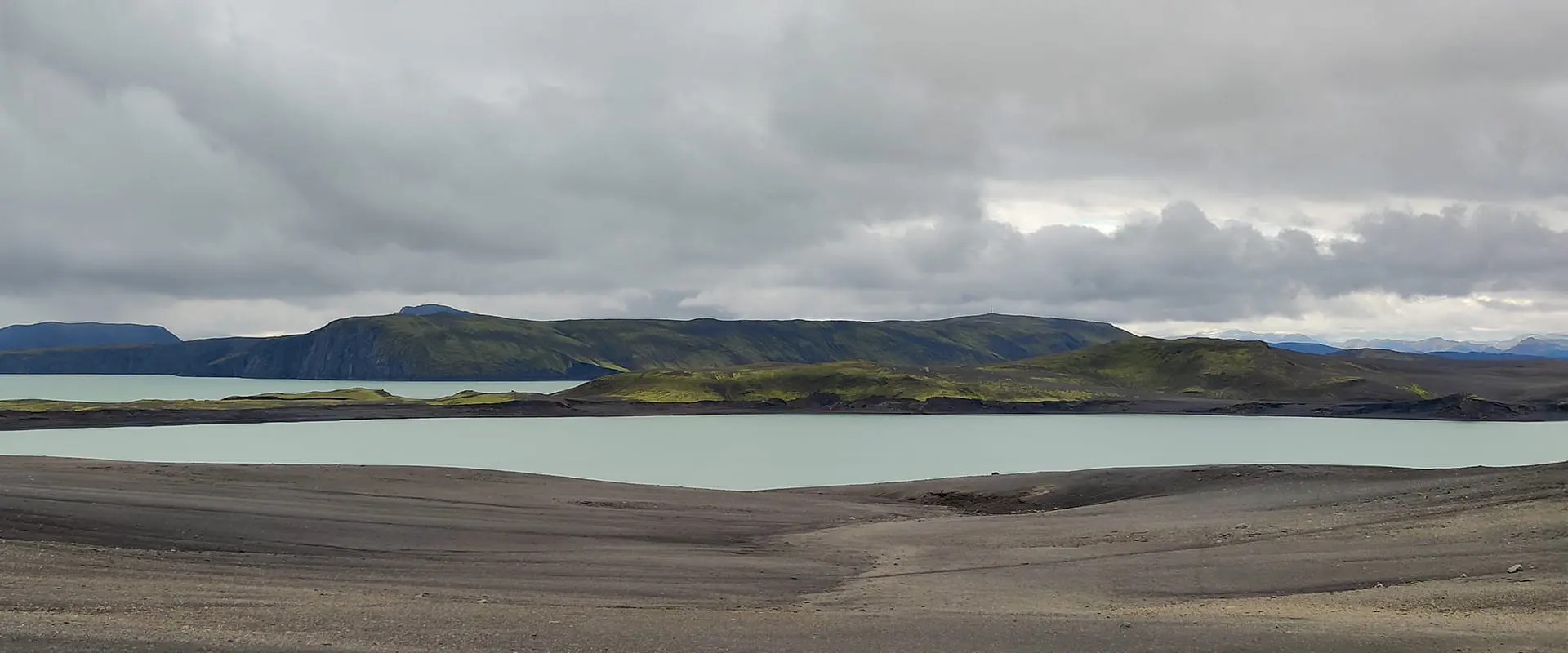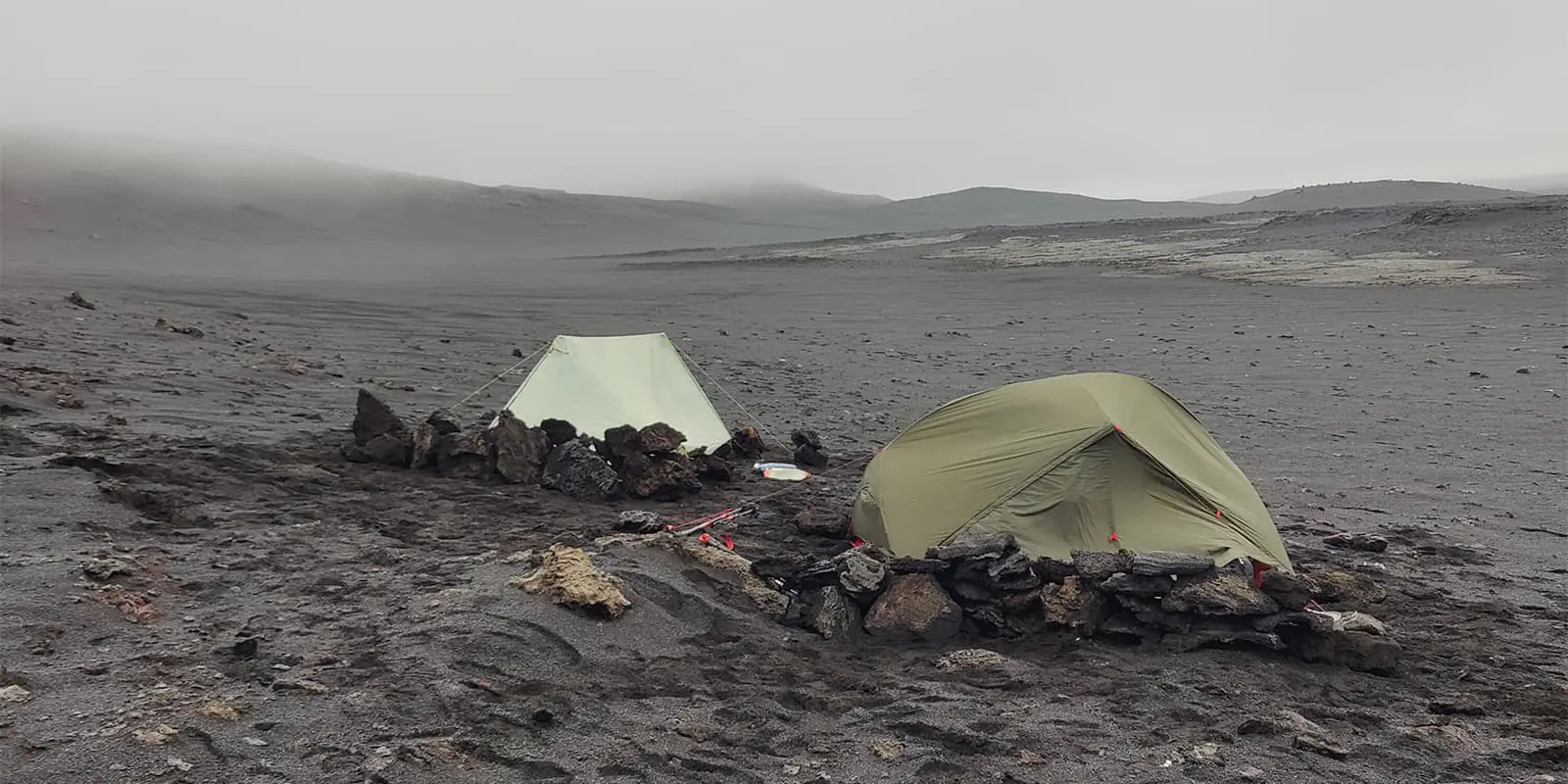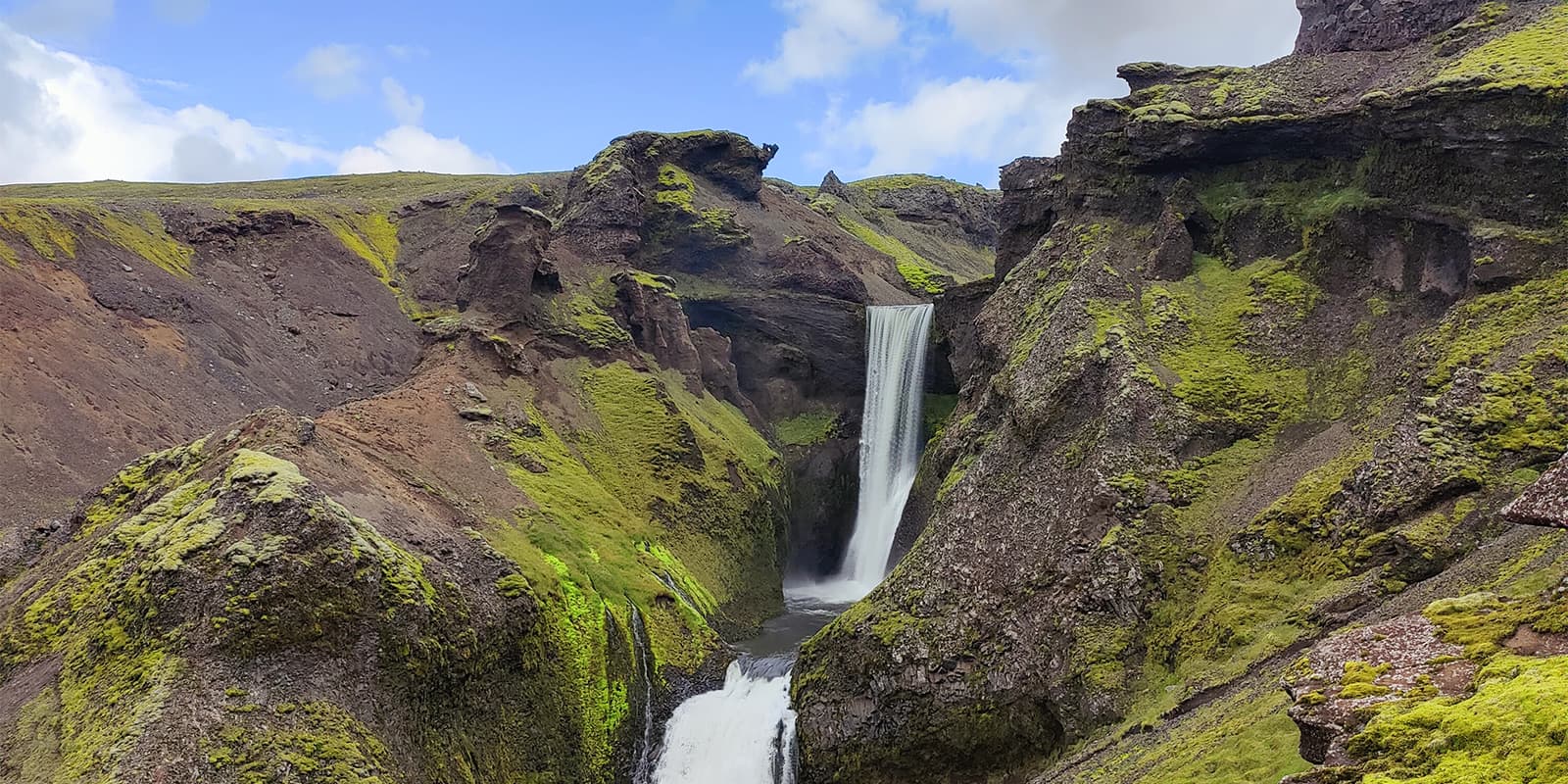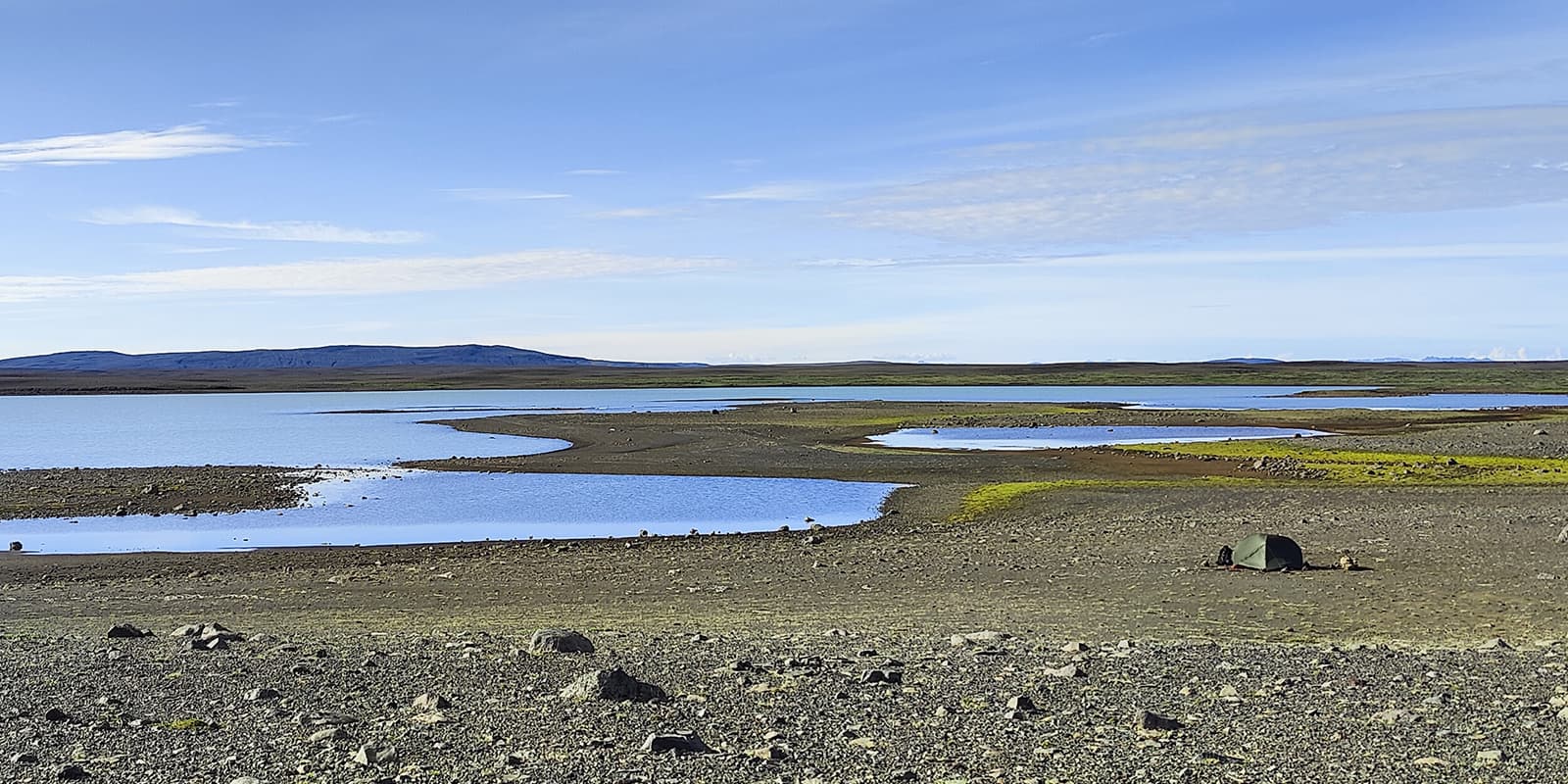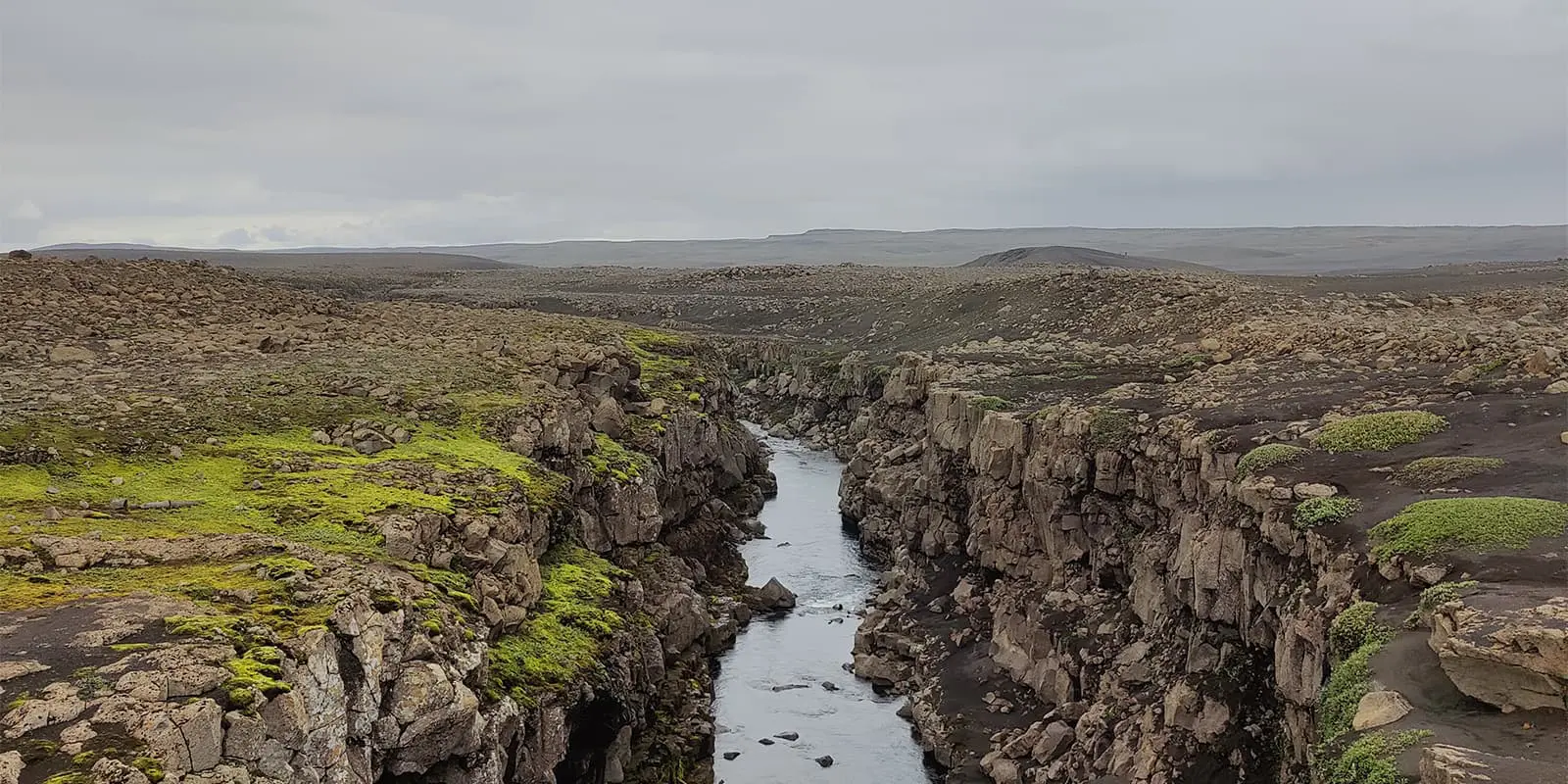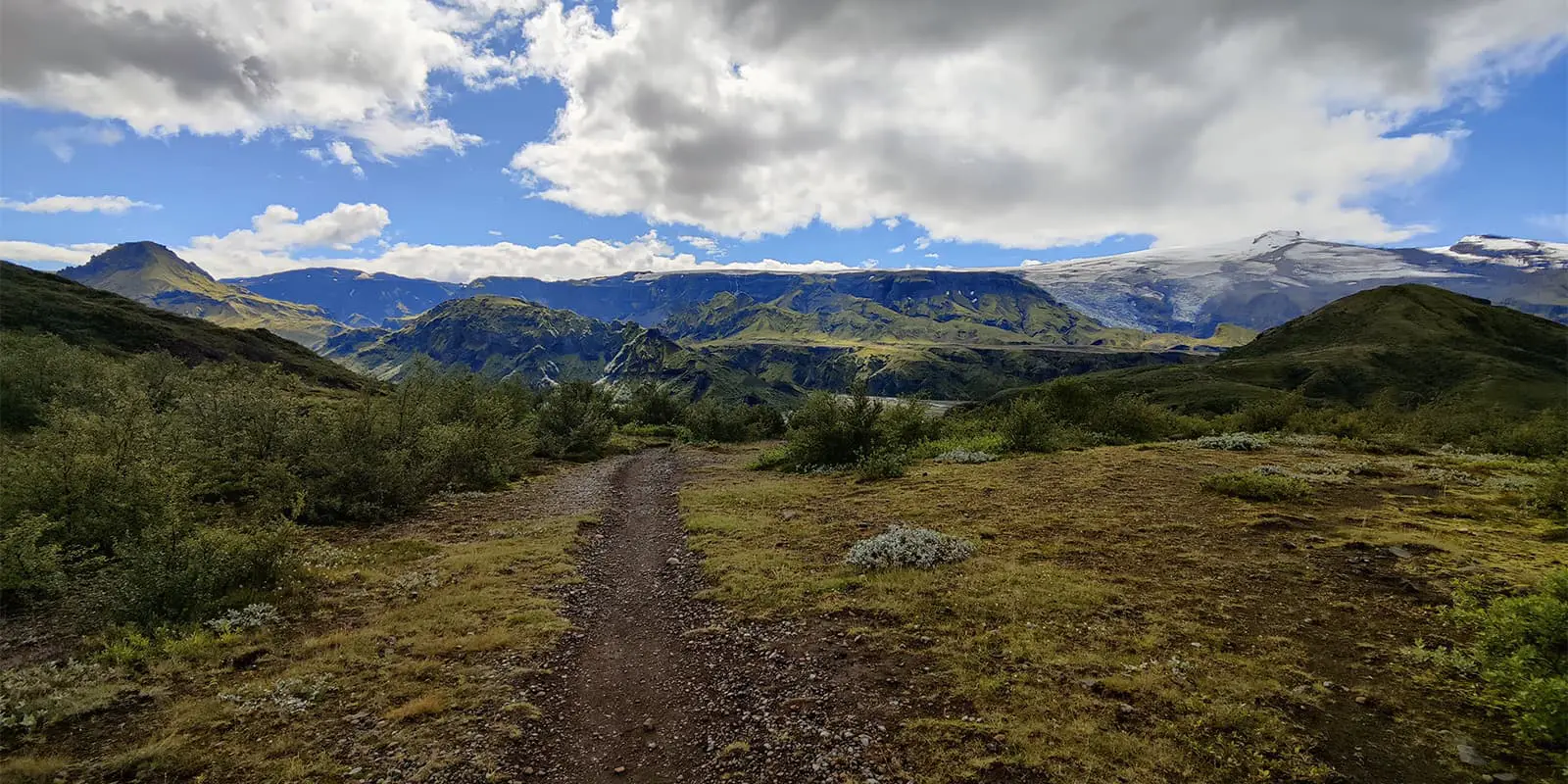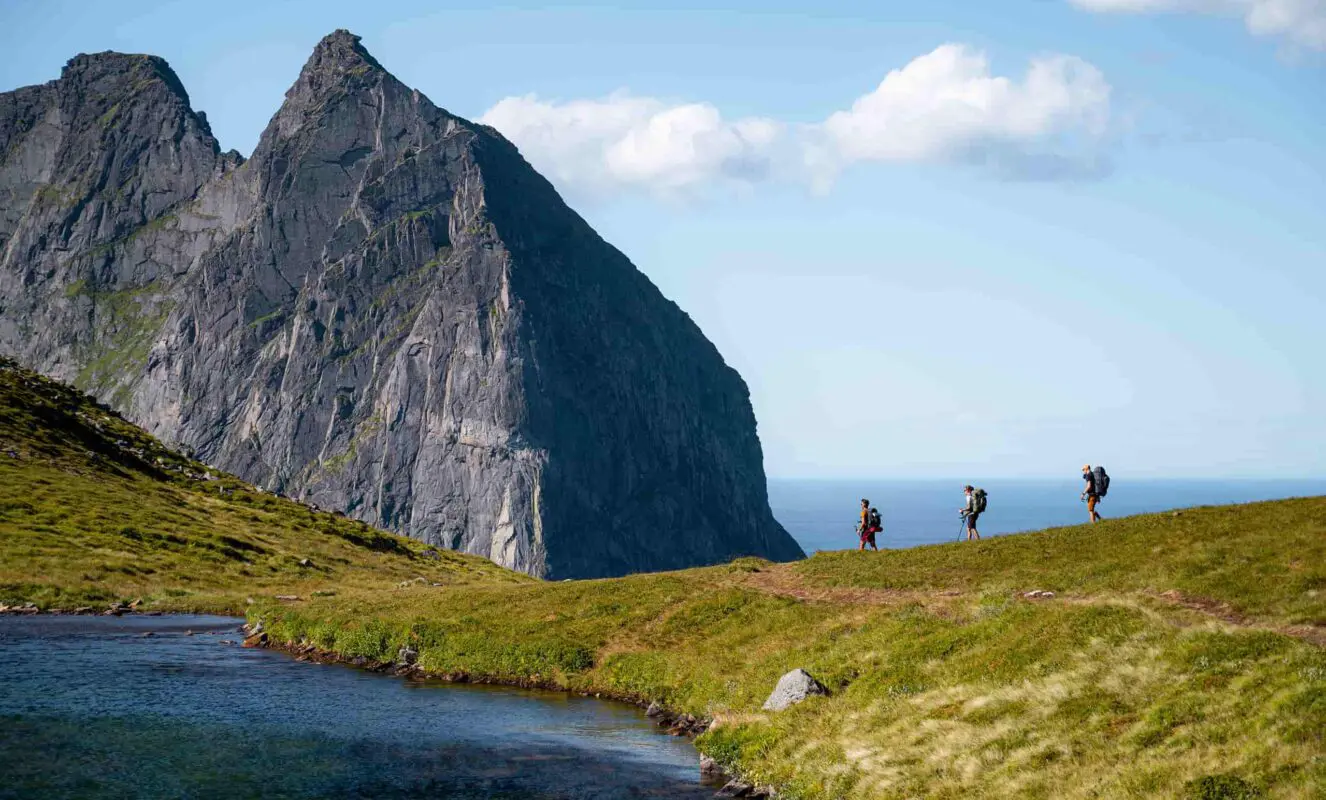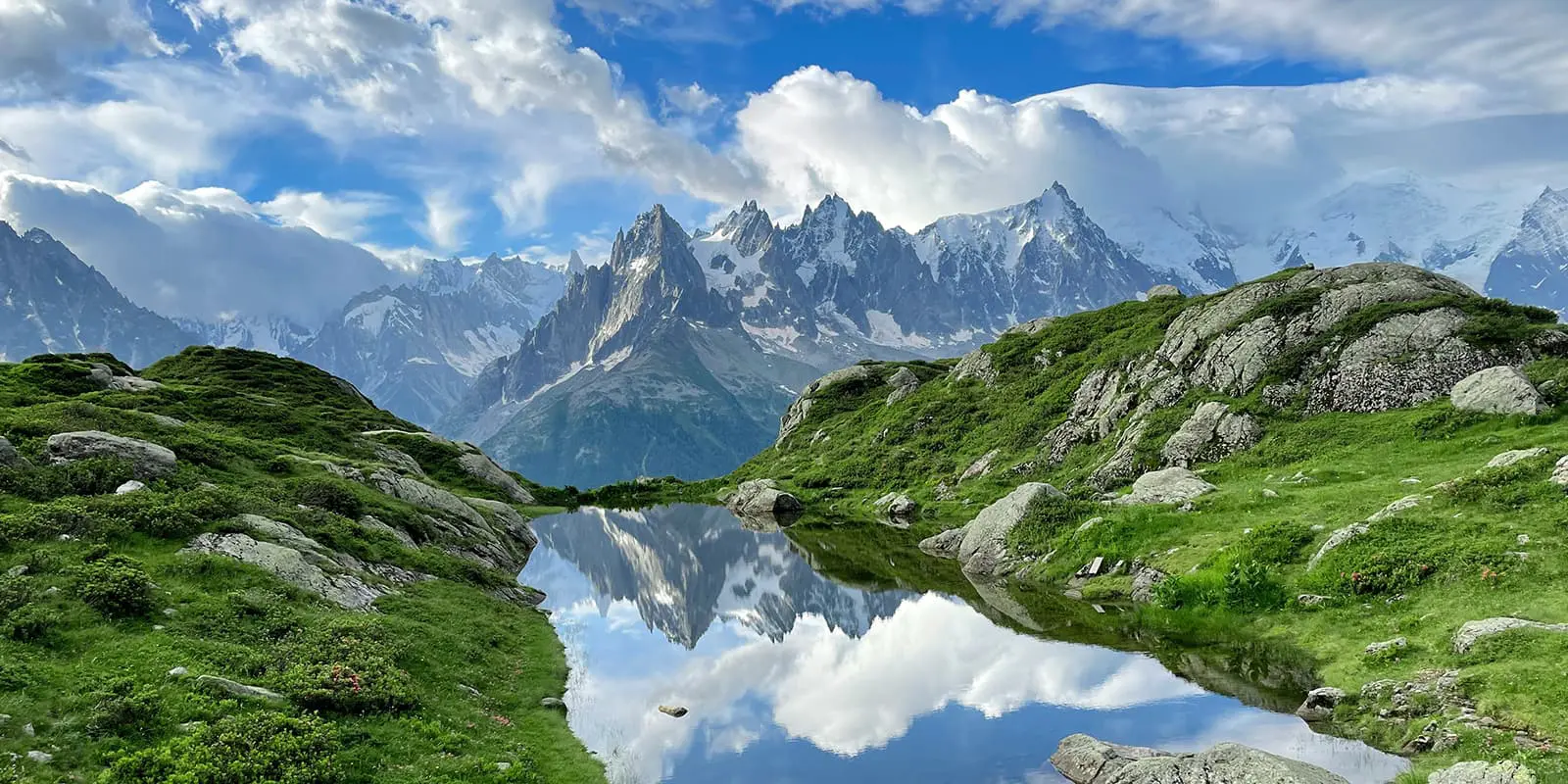Iceland is the land of ice and fire, fairies, trolls, geothermal springs, rivers and waterfalls, sheep and horses. A land that has a mythical touch and lies on the American and the European continental plate. Therefore it is full of volcanic activity, showing off with spectacular eruptions that form the land.
Iceland’s unique and diverse landscape is best experienced on foot. There are many starting points to choose from, many possibilities to cross it, east to west and north to south. The Iceland Crossing goes north to south starting at Lake Mývatn, a spectacular, alien-like landscape, and goes through what the Icelanders call “The Sands.” You’ll walk beside massive glaciers for days, viewing them from various angles, and they’ll never cease to amaze you. They are called Vatnajökull, Hofsjökull, Mýrdalsjökull, and the infamous Eyjafjallajökull, just to name a few. Under all these glaciers, there are volcanoes. However, be prepared for some dark and monotonous landscape reminding you of Mordor. Do not lose the ring on the way! You will see many different shapes of volcanic sculptures and rocks as well as fascinating flora that adapted to these conditions



